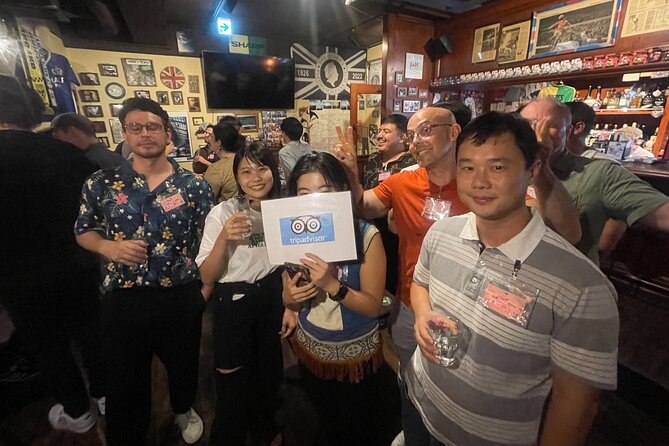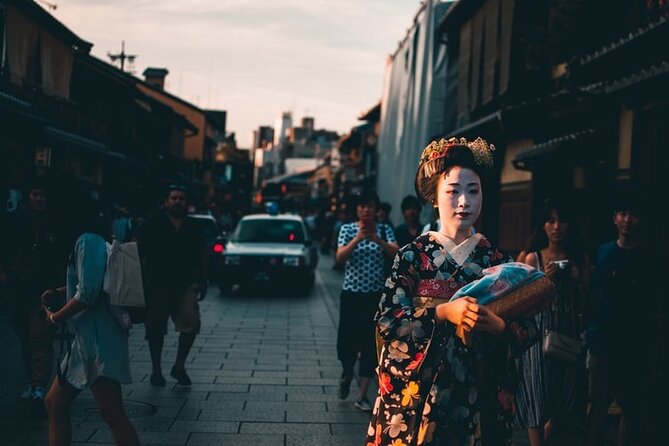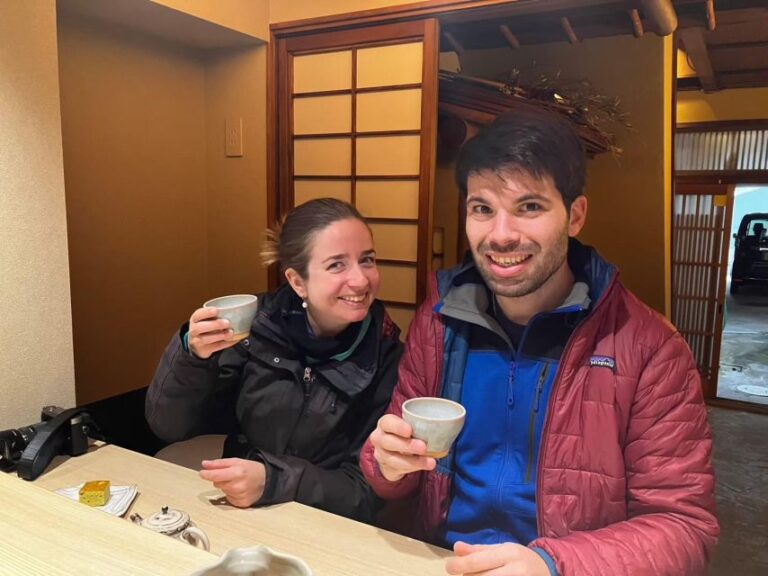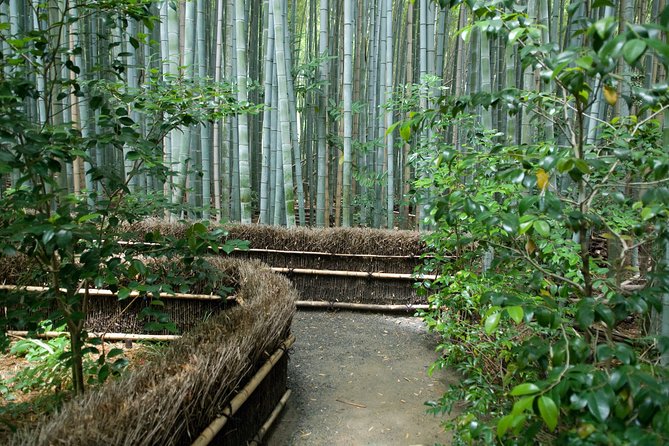Ninnaji Temple, a revered Buddhist site in Kyoto, invites visitors to explore its captivating history and architectural wonders. Established in 888 AD, this temple serves as the primary place of worship for the Omuro school of the Shingon sect. Travelers who purchase the Ninnaji Temple entry ticket can explore its striking 5-story pagoda, stroll through the serene Japanese garden, and witness the enchanting Omuro sakura cherry blossoms that bloom throughout the seasons. Beyond the temple’s exterior, the Reihokan Museum showcases a treasure trove of cultural artifacts and national treasures, offering a deeper glimpse into the temple’s rich spiritual legacy. With these enticing features, Ninnaji Temple promises an immersive and unforgettable experience for all who venture through its gates.
Key Points
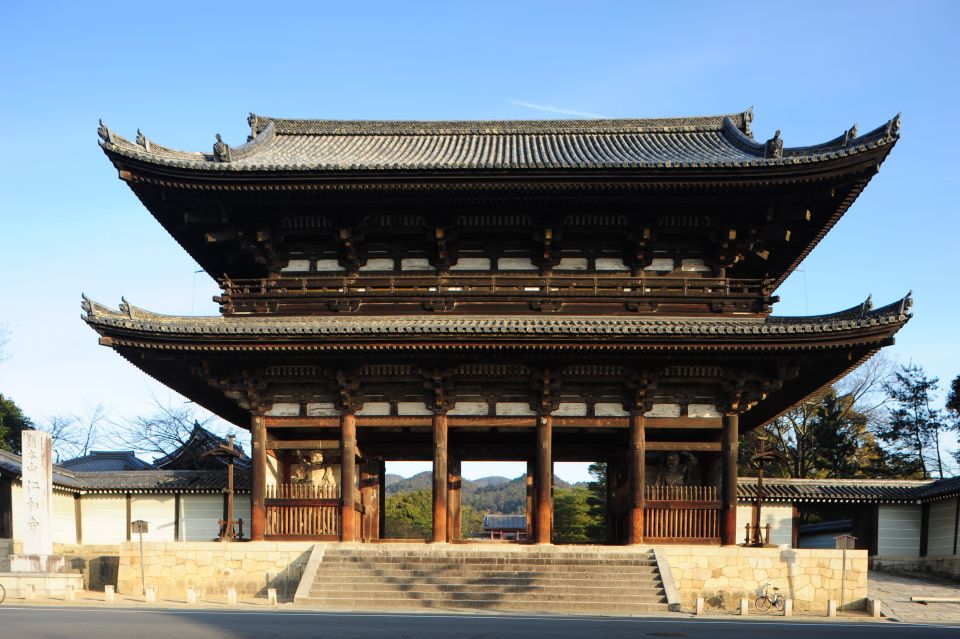
-
The Ninnaji Temple entry ticket provides access to the 5-story pagoda, the Reihokan Museum housing national treasures, and the temple’s tranquil Japanese garden.
-
Visitors can attend seasonal festivals showcasing the vibrant Omuro sakura cherry blossoms, autumn foliage, and winter wonderland of the temple grounds.
-
The ticket includes admission to the Goten palace and its gardens, allowing for a comprehensive tour of the temple’s architectural and cultural highlights.
-
The temple is accessible to visitors with disabilities, with accommodations and free entry for those with physical disability certificates.
-
The Ninnaji Temple entry ticket offers a profound encounter with the temple’s enduring spiritual legacy and the opportunity to explore its rich collection of artifacts and relics.
Temple History and Significance
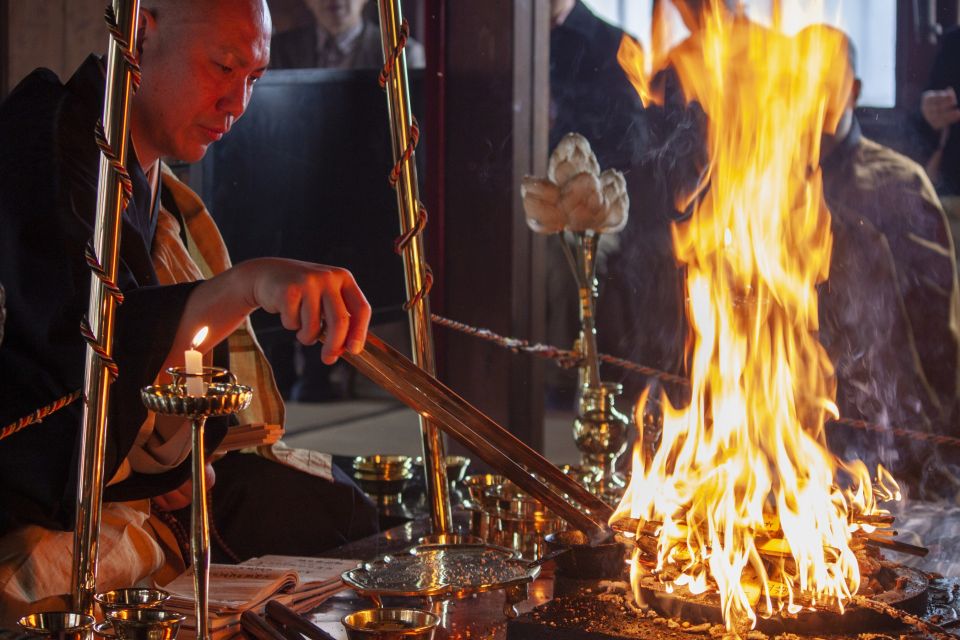
Ninnaji Temple was originally founded in 888 AD under the patronage of Emperor Uda, who established it as the main temple of the Omuro school of the Shingon sect of Buddhism.
Over the centuries, the temple has housed numerous national treasures and cultural artifacts, cementing its status as a significant religious and historical site.
Its 5-story pagoda and late-blooming Omuro sakura cherry trees are particularly noteworthy features that draw visitors year-round.
Plus, the temple serves as the starting point for the Omuro Pilgrimage, a shorter version of the revered Shikoku Pilgrimage.
Ninnaji Temple’s rich history and diverse offerings make it a must-visit destination for anyone exploring the spiritual and cultural wonders of Kyoto.
Key Architectural Features
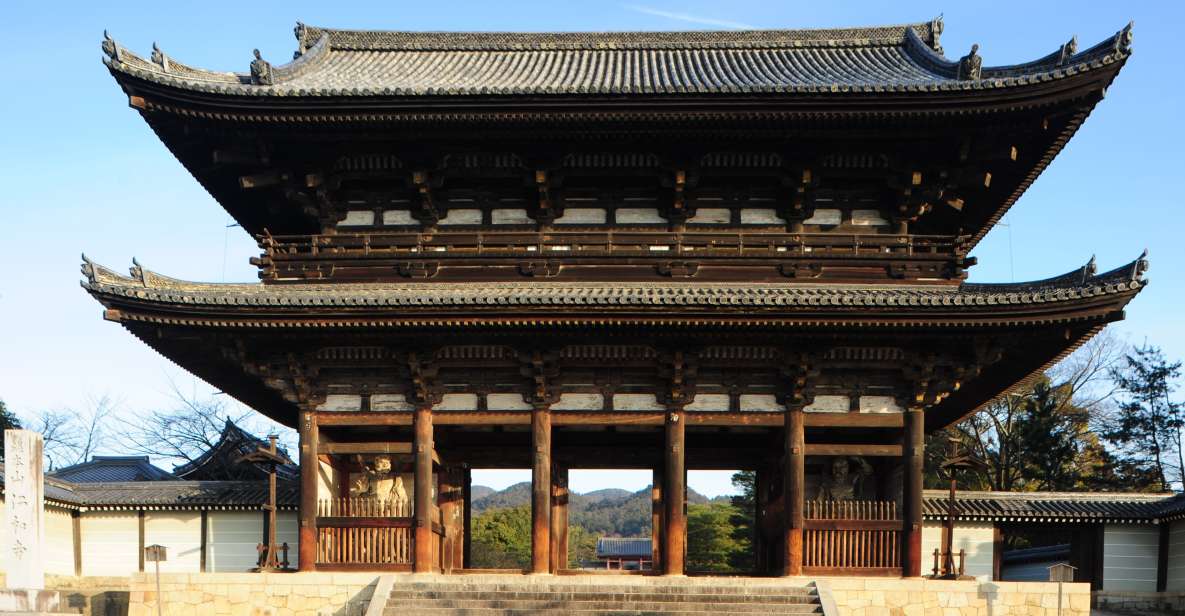
The 5-story pagoda, a striking architectural centerpiece, rises majestically on the temple grounds, drawing the eyes of visitors. Intricate Buddhist carvings and ornate designs adorn the pagoda’s exterior, showcasing the impressive craftsmanship of the era.
The Omuro Pilgrimage course, a shorter version of the famous Shikoku Pilgrimage, allows visitors to experience a condensed spiritual journey.
The Reihokan Museum houses a treasure trove of important cultural artifacts and national treasures.
The temple buildings are adorned in vivid red and yellow hues during the vibrant autumn foliage.
A serene Japanese garden is blanketed in a peaceful winter wonderland after snowfall.
Seasonal Highlights
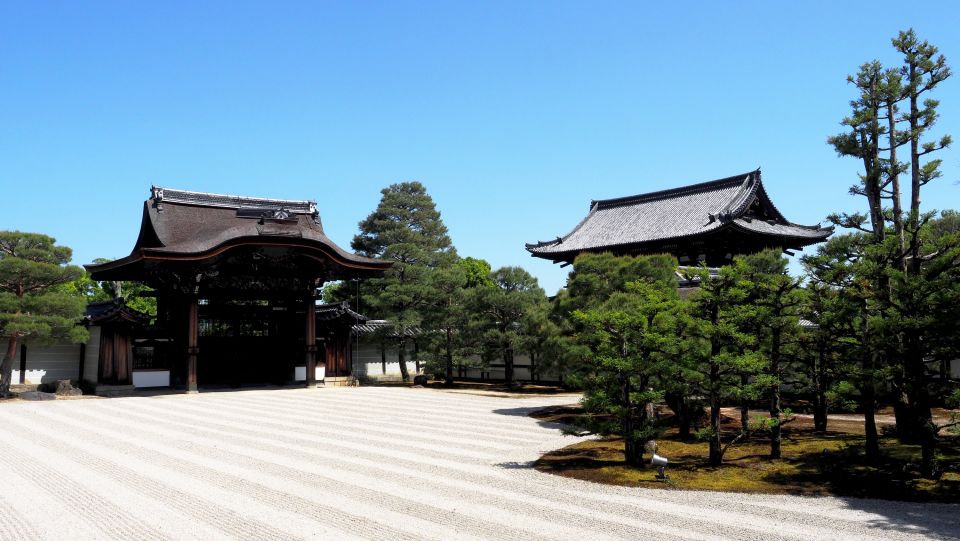
Throughout the year, Ninnaji Temple offers visitors a chance to experience the natural beauty and spiritual essence of the site through its captivating seasonal highlights.
In spring, the late-blooming Omuro sakura cherry trees burst into vibrant pinks, creating a breathtaking display.
Summer brings lively Buddhist ceremonies with priests in colorful robes, immersing guests in the temple’s rich traditions.
As autumn arrives, the vivid red and yellow hues of the temple buildings paint a stunning picture against the crisp air.
Even in winter, the serene Japanese garden provides a tranquil respite after a gentle snowfall.
Each season at Ninnaji Temple presents a unique opportunity to connect with the temple’s timeless allure.
Ticket Inclusions
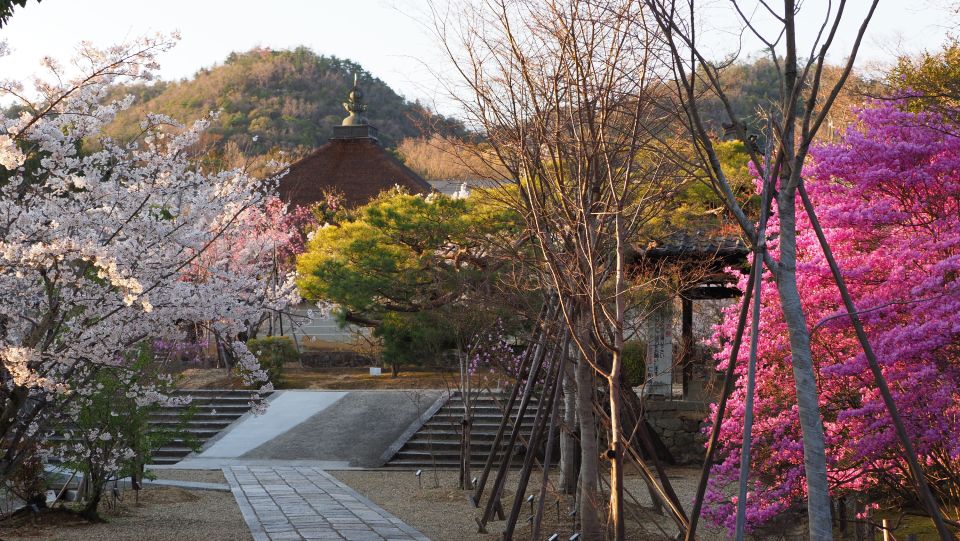
A Ninnaji Temple entry ticket provides visitors access to the Goten palace and gardens, as well as the option to explore the Reihokan Museum and attend special events like flower festivals.
The ticket inclusions offer a comprehensive experience for guests:
- Entrance to the Goten palace and its tranquil gardens
- Access to the Reihokan Museum, which houses important cultural artifacts
- Admission to seasonal flower festivals celebrated at the temple
- The ability to partake in other special events and exhibits, as indicated on the ticket
These inclusions allow visitors to explore the rich history, architecture, and cultural significance of Ninnaji Temple, making the most of their visit to this iconic Kyoto landmark.
Visiting Hours and Accessibility
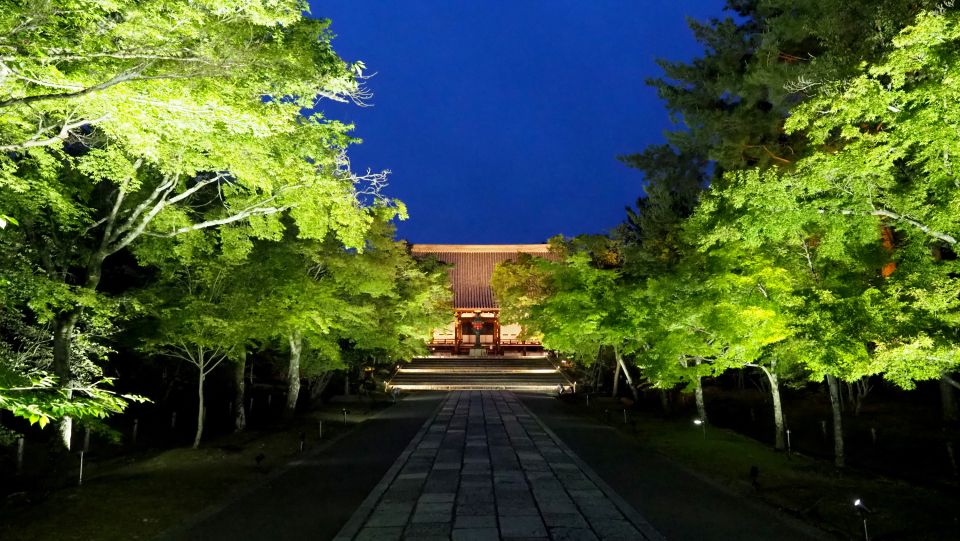
Ninnaji Temple welcomes visitors from 9 AM to 5 PM during the March-November season, and from 9 AM to 4:30 PM in the December-February months.
Those with physical disability certificates can enter the temple free of charge.
The ticket booths close 30 minutes before the temple’s closing time, so visitors should plan their visit accordingly.
The temple’s accessibility accommodates those with disabilities, ensuring an inclusive experience.
Whether exploring the 5-story pagoda, the late-blooming Omuro sakura cherry trees, or the Reihokan Museum, visitors can enjoy the rich cultural heritage of Ninnaji Temple throughout the year.
Omuro Sakura Cherry Blossoms
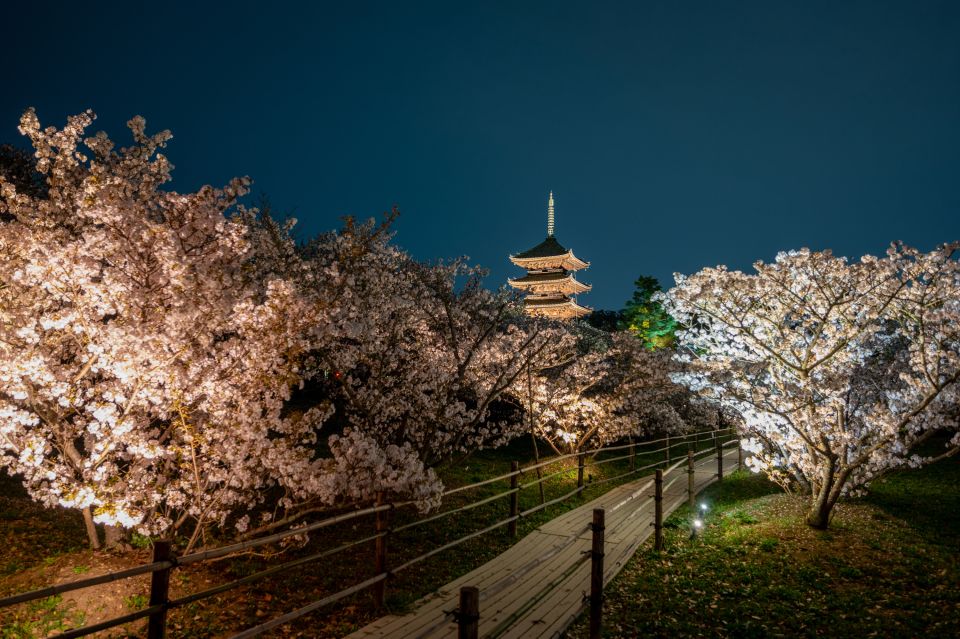
The late-blooming Omuro sakura cherry trees captivate visitors during the temple’s spring season, blanketing the grounds in a delicate floral display. These unique cherry trees bloom up to two weeks later than the typical cherry blossoms, allowing guests to extend their hanami, or cherry blossom viewing, experience.
Visitors can:
- Stroll through the temple’s gardens and admire the soft pink petals as they drift in the breeze.
- Enjoy a picnic beneath the Omuro sakura trees, savoring the serene atmosphere.
- Capture stunning photographs of the temple’s architecture framed by the delicate blooms.
- Attend the annual Omuro sakura festival, celebrating the trees’ late-flowering beauty.
The Omuro sakura’s later bloom cycle makes Ninnaji Temple a premier destination for cherry blossom enthusiasts seeking to extend their springtime traditions.
Reihokan Museum Exhibits
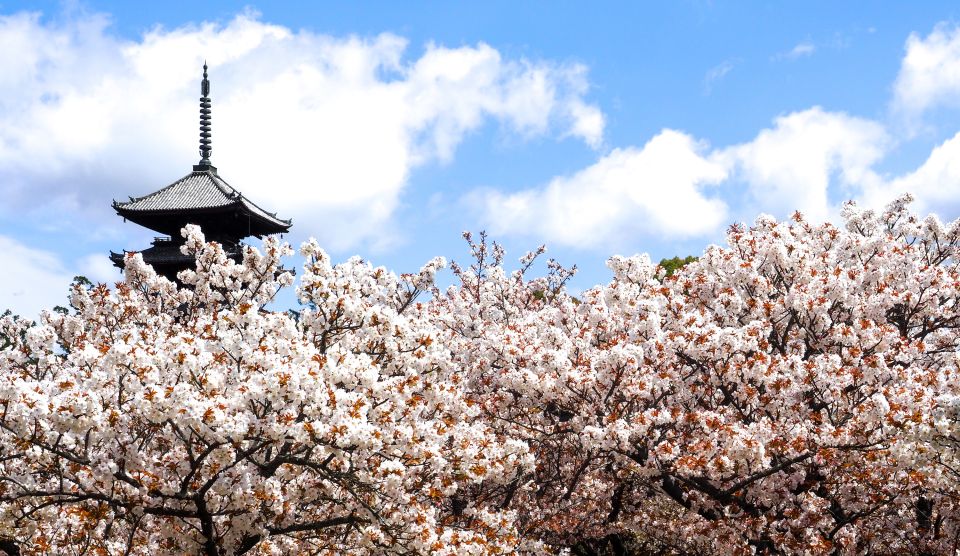
Within the Reihokan Museum at Ninnaji Temple, visitors can explore a rich collection of national treasures and cultural artifacts that offer insights into the temple’s storied history and Buddhist traditions.
The museum’s displays feature meticulously-crafted reliquaries, sutras, and ritual implements used in Shingon Buddhist practices. Visitors can admire the intricate details and expert craftsmanship of these sacred objects, many of which are designated as Important Cultural Properties.
The museum also houses a comprehensive collection of calligraphic works, paintings, and sculptures that provide a window into the artistic expressions of Ninnaji’s monks and patrons over the centuries.
A visit to the Reihokan Museum promises a profound encounter with Ninnaji’s spiritual legacy and the enduring cultural significance of this iconic Kyoto temple.
Additional Fees and Considerations
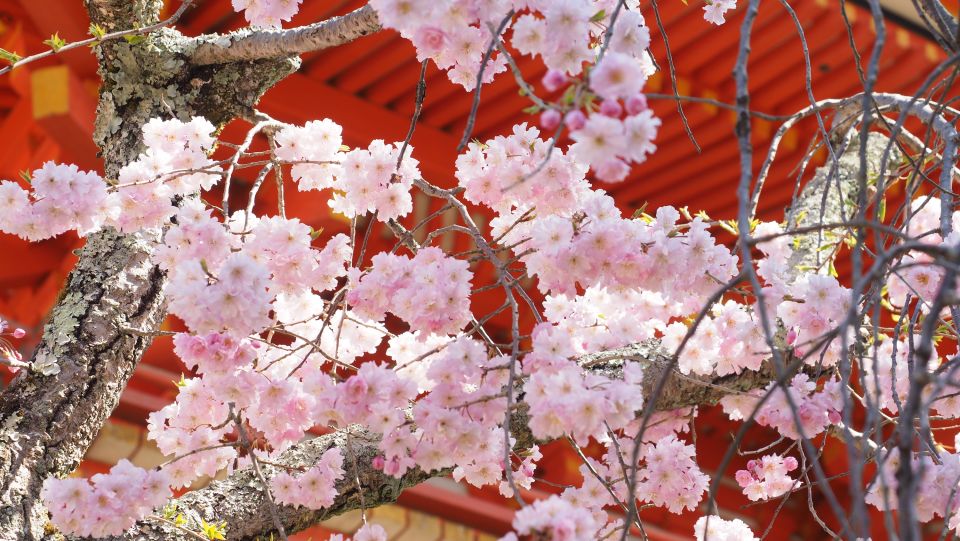
Aside from the general admission ticket, visitors to Ninnaji Temple should be aware of a few additional fees and considerations when planning their visit.
While the main temple and gardens are included in the standard entry, there are optional experiences that come with an extra cost. These include:
- Accessing the Omuro Sakura cherry blossom area during the spring bloom season
- Attending special events or festivals held at the temple
- Visiting the Reihokan Museum to see the extensive collection of cultural artifacts
- Purchasing souvenirs or enjoying the on-site dining options
Visitors should also note that the ticket booths close 30 minutes before the temple’s closing time, so it’s essential to plan accordingly.
Plus, those with physical disability certificates can enter for free.
Frequently Asked Questions
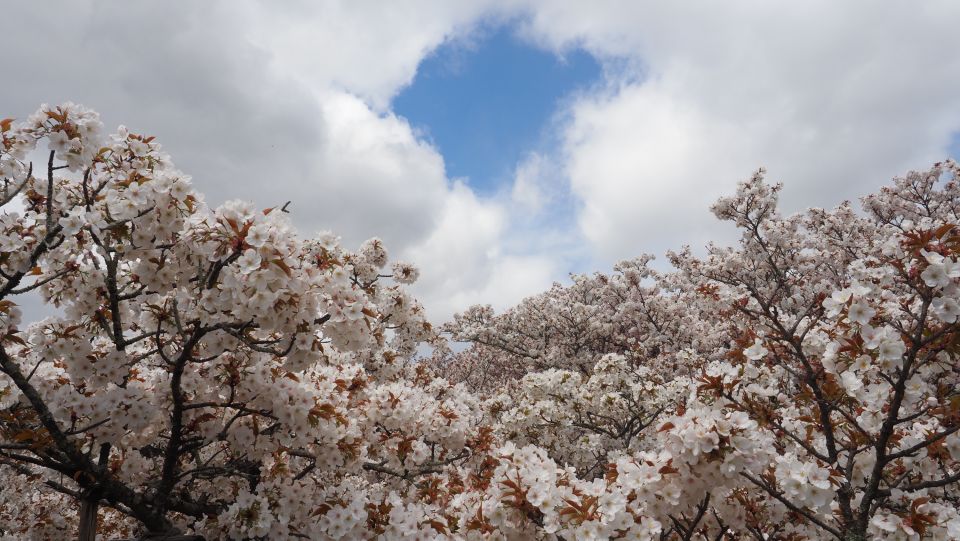
Can I Take Photos Inside the Temple Buildings?
Photography is generally allowed inside Ninnaji Temple, but visitors should be mindful and avoid disrupting others or damaging the historic structures. Some areas may have restrictions, so it’s best to check with staff upon arrival.
Are There Any Guided Tours Available at the Temple?
Yes, Ninnaji Temple offers guided tours that provide in-depth explanations of the temple’s history, architecture, and cultural significance. Visitors can learn more about the temple’s national treasures and engage with knowledgeable guides during their visit.
Are There Any Dining Options Within the Temple Grounds?
The Ninnaji Temple grounds do not have any dining options within their premises. However, there are several restaurants and cafes located nearby in the surrounding Kyoto neighborhood that visitors can explore for dining experiences.
Can I Purchase Souvenirs or Merchandise at the Temple?
Yes, visitors can purchase souvenirs and merchandise at Ninnaji Temple. The temple has a gift shop that offers a variety of traditional Japanese items, including artisanal crafts, religious artifacts, and snacks, providing an opportunity to take home mementos of the visit.
Is There a Dress Code or Any Clothing Restrictions to Enter the Temple?
There’s no strict dress code, but visitors should wear modest, respectful attire when entering the Ninnaji Temple. Shorts, tank tops, and revealing clothing aren’t recommended, as the temple is a sacred religious site.
Recap
Ninnaji Temple’s entry ticket provides visitors with an immersive experience, allowing them to explore the temple’s stunning architecture, serene gardens, and cultural treasures.
From the iconic 5-story pagoda to the Reihokan Museum’s national treasures, the ticket grants access to the temple’s rich history and spiritual legacy.
Travelers can witness Buddhist ceremonies, marvel at the Omuro sakura cherry blossoms, and explore the temple’s significance within the Shingon sect, making it a must-visit destination in Kyoto.

